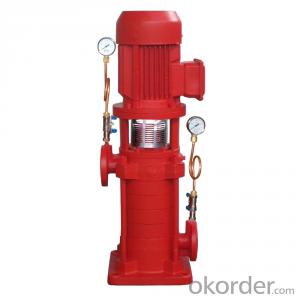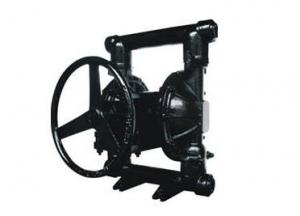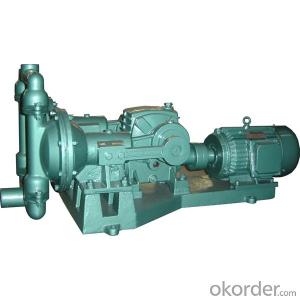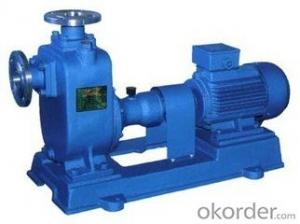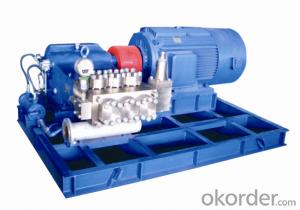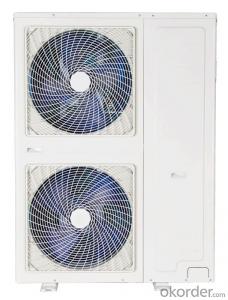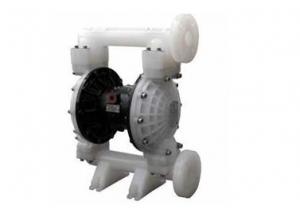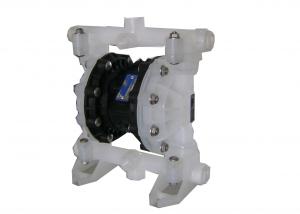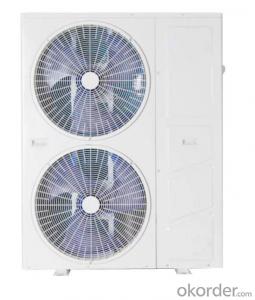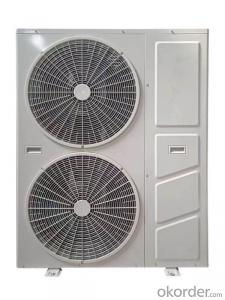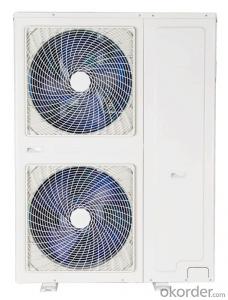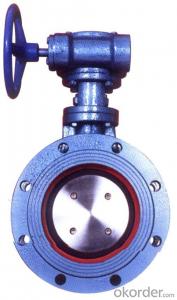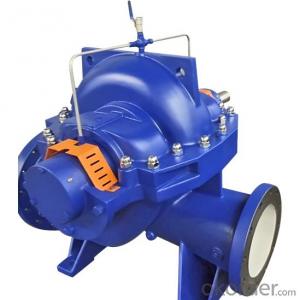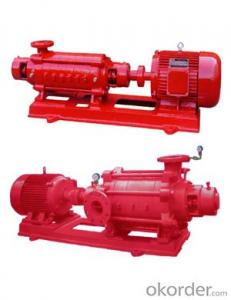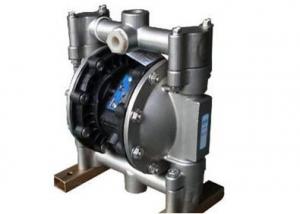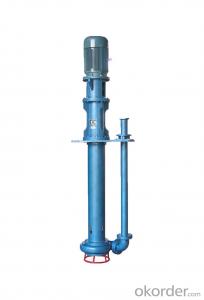XBD-DL Electrical Water Pump in Fire Pump System
- Loading Port:
- Shanghai
- Payment Terms:
- TT OR LC
- Min Order Qty:
- 1 unit
- Supply Capability:
- 500 unit/month
OKorder Service Pledge
OKorder Financial Service
You Might Also Like
XBD-DL Electrical Water Pump in Fire Pump System
Product Overview of XBD-DL Electrical Water Pump in Fire Pump System
XBD series fixed fire pump are late-model products developed strictly in accordance with the latest-issued GB6245-2006 Performance Requirements and Testing Methods for Fire Pumps responding to the actual and special needs in market. XBD series fixed fire pumps are tested by National Quality Supervision & Test Center for Fire Fighting Equipment. They are conforming to or even higher than the standard in respect of performance index.
XBD series are provided with four structural types to meet the different requirements of users, including vertical single-stage, vertical multistage, horizontal single-stage and horizontal multistage.
Applications of XBD-DL Electrical Water Pump in Fire Pump System
XBD series fire pumps are mainly used in the hydrant and automatic spray extinguishing systems etc. in the fixed fire fighting system in enterprises,institutions,project construction,high building etc,to deliver clean water and medium similar to water in physiochemical property,not containing solid grain and of temperature below 100°C. They are also used in the common water supply system for fire control, life and production, and water supply and drainage in constructions and municipal projects etc.
Parameters of XBD-DL Electrical Water Pump in Fire Pump System
•Flow range: 1~200L/s
•Pressure range: 0.2~2.25MPa
•Motor power range: 1.5~200kW
•Inlet/outlet diamater: DN50~DN200mm
FAQ
Q: Do you have self-priming pumps?
A: Yes, our product portfolio also includes two ranges of self-priming pumps: self-priming electric pumps and self-priming side channel pumps.
Q: Is it really necessary to fit a bleed valve for the boxes?
A: It is always best to have a bleed valve as the gas produced by the fermenting sewage is potentially hazardous.
Q: If I increase the power of the motor, must I also increase the power of the inverter?
A: You must select the size of converter that allows maximum absorption of the electric motor.
Q: Do you have pumps with grinders?
A: Yes, the WQ models.
Q: How long is your warranty?
A: Unless otherwise expressly authorized in writing, by specifying a longer period or different conditions, CNBM states that, for a period of twelve (12) months from delivery date, all Products supplied are free from defects in materials and workmanship, and conform to the applicable specifications. Either the delivery documentation or the invoice must be provided to prove delivery date. In absence of such documents, the production date appearing on the product label may suffice.
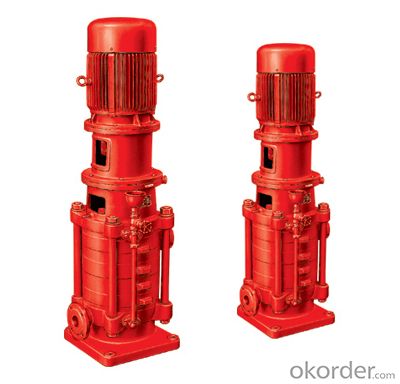
- Q:How does an air pump handle continuous vibration?
- Various mechanisms are integrated into the structure of an air pump in order to effectively handle continuous vibration. Typically, the motor of the air pump is mounted on materials such as rubber or foam pads that absorb vibration. These pads function as shock absorbers, reducing the transmission of vibration from the motor to the rest of the pump. In addition, the internal components of the air pump, such as pistons or impellers, are carefully balanced and aligned to minimize vibration. This guarantees smooth operation and decreases the likelihood of damage caused by excessive vibrations. Furthermore, the housing of the air pump is constructed from sturdy materials like metal or thick plastic, which provide both structural support and vibration dampening. The housing also serves the purpose of containing and isolating the internal components of the pump, contributing to its overall stability. Moreover, certain air pumps are equipped with extra features such as anti-vibration feet or mounts, which further reduce vibration by absorbing or isolating the energy generated during operation. These features play a crucial role in stabilizing the air pump, preventing excessive movement and minimizing the potential for damage. In conclusion, an air pump effectively manages continuous vibration by incorporating diverse design elements, including vibration-absorbing materials, balanced internal components, sturdy housing, and additional features like anti-vibration feet. These mechanisms work together to ensure smooth and stable operation, thus minimizing the impact of vibrations on the pump's performance and lifespan.
- Q:Can an air pump be used for inflating inflatable water trampolines?
- Yes, an air pump can be used for inflating inflatable water trampolines. In fact, many inflatable water trampolines come with their own compatible air pumps for easy inflation. These pumps are designed specifically for inflating large inflatables like water trampolines and provide the necessary airflow and pressure to ensure proper inflation. Using an air pump will save you time and effort compared to manually inflating the trampoline, and it will help ensure that the trampoline is fully inflated and ready for use. Just make sure to follow the manufacturer's instructions and guidelines when using the air pump to avoid overinflation or damage to the trampoline.
- Q:How is an air pump powered?
- Typically, an air pump is powered by either electricity or a manual mechanism. Electric air pumps are commonly utilized for inflating air mattresses, inflatable toys, and other objects that need to be inflated. These pumps are designed to be connected to a power source, such as a wall socket or a car's cigarette lighter, and they employ an electric motor to generate airflow, which subsequently inflates the desired item. These electric pumps are known for their convenience and efficiency, as they can swiftly inflate objects with minimal exertion. On the contrary, manual air pumps rely on human effort for power. They generally consist of a handle or a foot pedal that necessitates manual operation to create airflow. By repeatedly pushing or pressing the handle or pedal, the air inside the pump is compressed and forced out through a nozzle, resulting in a stream of air that can be directed to inflate various objects. Manual air pumps are commonly employed for inflating bicycle tires, sports balls, and inflatable pools. They possess the advantage of being portable and not requiring an external power source, making them suitable for outdoor activities or situations where electricity is not accessible. To summarize, an air pump can be powered either by electricity, utilizing an electric motor to generate airflow, or manually, relying on human effort through a handle or foot pedal mechanism. The choice of power source depends on the specific application and convenience requirements.
- Q:Can an air pump be used for pumping water?
- No, an air pump cannot be used for pumping water. Air pumps are designed to move air, not liquids. They work by creating pressure to push air through a system, such as an aquarium or inflatable object. Water pumps, on the other hand, are specifically designed to move water and have mechanisms to handle the liquid, such as impellers or diaphragms. Trying to use an air pump for pumping water would not be effective and could potentially damage the pump.
- Q:An air pump is not switched on and the voltage is normal
- After the motor is energized, the following reasons may not be possible:1, power supply missing phase, including switch or contactor, at least one phase contact bad or broken line, at this time the motor will have buzz.2. If there is no movement, check to see if the electricity is delivered;3, whether the mechanical part of the locking conditions, limit start, etc..
- Q:What are the common uses of an air pump?
- Air pumps find widespread use across various applications. Inflating tires, balls, and other inflatable objects are among their most common uses. They are also extensively employed in aquariums to aerate the water and enhance oxygen levels, benefiting fish and aquatic organisms. Moreover, air pumps play a crucial role in medical equipment like ventilators and oxygen concentrators, delivering essential oxygen to patients struggling with breathing difficulties. Furthermore, industries rely on air pumps for diverse purposes, including powering pneumatic tools, supplying compressed air to machinery, and assisting in the operation of air-powered systems. Ultimately, air pumps prove to be versatile devices with wide-ranging applications in both industrial settings and everyday life.
- Q:Can an air pump be used for inflating air mattresses with built-in sleep tracking?
- Indeed, an air pump is capable of inflating air mattresses equipped with built-in sleep tracking. The fundamental purpose of an air pump remains the inflation of an air mattress, irrespective of any supplementary attributes like built-in sleep tracking. By delivering the required air pressure, the air pump ensures optimal comfort and support for a restful night's sleep. Nevertheless, it should be emphasized that setting up or connecting the built-in sleep tracking feature of the mattress might necessitate additional steps or the utilization of a distinct device or application for tracking purposes.
- Q:Can an air pump be used for aeration in artificial lakes or ponds?
- Yes, an air pump can be used for aeration in artificial lakes or ponds. An air pump helps increase oxygen levels in the water by circulating air through diffusers or air stones, which in turn promotes a healthier ecosystem for aquatic life.
- Q:Can an air pump be used for inflating air dusters?
- No, an air pump cannot be used for inflating air dusters. Air dusters typically contain compressed gas, such as compressed air or a specific gas blend, which requires a canister for storage and dispensing.
- Q:Can an air pump be used for cooling?
- Sorry, an air pump is not suitable for cooling purposes. Normally, an air pump is utilized to inflate or pressurize items like tires, air mattresses, or balloons. Its functionality involves blowing air into the object, thereby increasing its volume or pressure. Cooling, conversely, involves decreasing the temperature of an object or environment. This is typically accomplished using devices such as air conditioners, fans, or refrigeration systems, which extract heat from an area or object. Consequently, although an air pump can aid in air circulation, it is not effective in cooling an area or object.
1. Manufacturer Overview |
|
|---|---|
| Location | |
| Year Established | |
| Annual Output Value | |
| Main Markets | |
| Company Certifications | |
2. Manufacturer Certificates |
|
|---|---|
| a) Certification Name | |
| Range | |
| Reference | |
| Validity Period | |
3. Manufacturer Capability |
|
|---|---|
| a)Trade Capacity | |
| Nearest Port | |
| Export Percentage | |
| No.of Employees in Trade Department | |
| Language Spoken: | |
| b)Factory Information | |
| Factory Size: | |
| No. of Production Lines | |
| Contract Manufacturing | |
| Product Price Range | |
Send your message to us
XBD-DL Electrical Water Pump in Fire Pump System
- Loading Port:
- Shanghai
- Payment Terms:
- TT OR LC
- Min Order Qty:
- 1 unit
- Supply Capability:
- 500 unit/month
OKorder Service Pledge
OKorder Financial Service
Similar products
New products
Hot products
Related keywords
